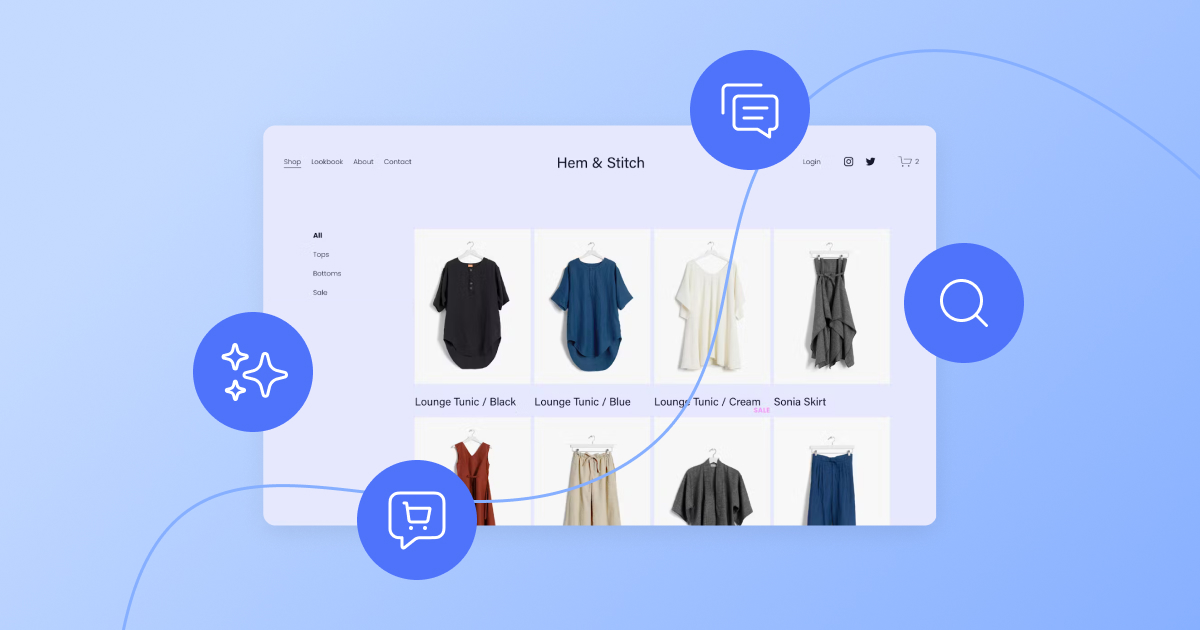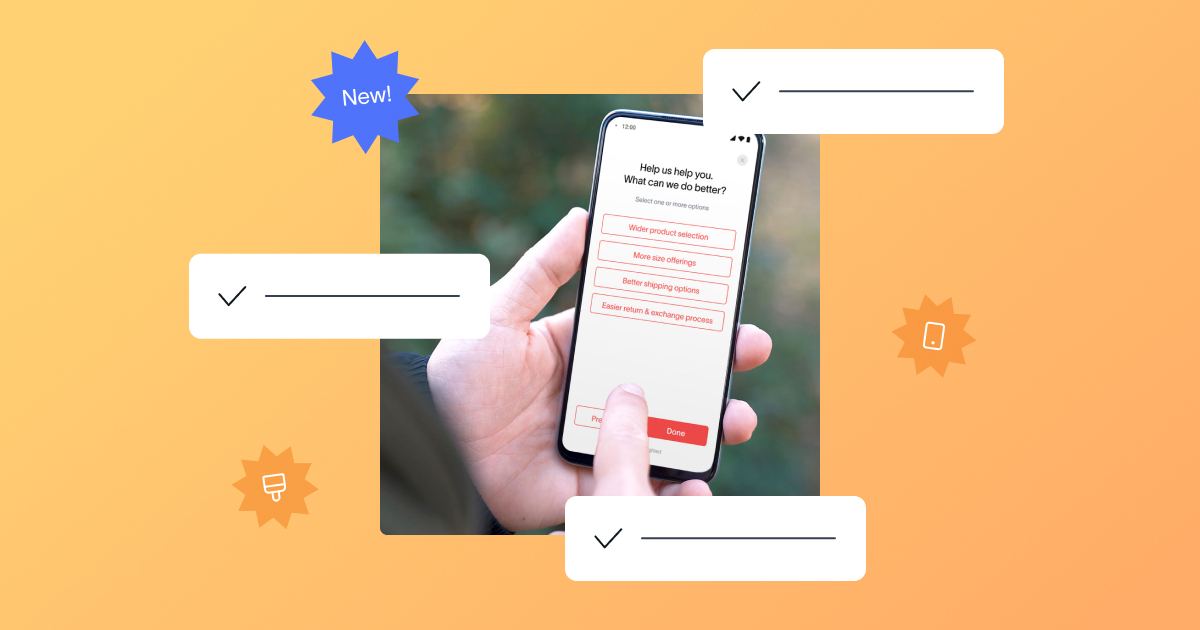It takes a lot to earn a customer’s loyalty. And once you bring someone into your company’s ecosystem, the last thing you want to do is lose them. That’s why customer retention is an important key performance indicator (KPI) for all businesses to measure, improve, and build upon.
In this article, we’ll break down the definition of customer retention, how to calculate your customer retention rate, and the significance of customer retention. We’ll also provide 4 strategies to retain customers long-term.
What is customer retention?
The definition of customer retention is the ability to keep current customers as repeat buyers, instead of them switching to a competitor. Retaining customers indicates that the company’s product, service, or brand is pleasing enough to the customer for them to stay with the company.
What’s your customer retention rate?
Before you can focus on improving the customer retention strategies you already have in place, you must benchmark how you’re currently doing in this department. You might have a feeling about how you’re doing, but you need an objective measurement that takes the emotions out of it. One of the best ways to do this is by measuring your customer retention rate.
While there are different formulas for calculating retention, the standard equation looks something like this: Retention Rate = ((CE-CN)/CS)) X 100
If that looks a little complicated, don’t worry. Once explained, you’ll find it very simple and intuitive.

Here’s what those variables stand for:
CE = The total number of customers when the period ends
CN = The total number of new customers that you acquired during the period
CS = The total number of customers at the start of a period
Customer retention rate calculation example
Let’s use an example to see how this equation can be used in the real world. In this scenario, let’s say you start the year/month/quarter with 1,000 customers. You lose 200 along the way, but you also gain 300. So at the end of the period, you have 1,100 customers.
The math would look like this:
1,100-300 = 800 → 800/1,000 = .8 → .8 X 100 = 80%
Now, you’re probably asking: Is 80% a good retention rate? The answer is, it depends!
In some industries, 80% would be incredible. In other industries, it would indicate that something is seriously wrong. At this point, you have to bring context into the matter and evaluate how you’re doing and what your goals are.
But regardless of whether your retention rate is 10% or 95%, there’s always room for improvement. Anything you do to improve your customer retention will significantly enhance your business.
TIP: The flip side of customer retention is customer churn, which is the number of customers you’ve lost over a period of time. Check out our customer churn 101 guide to learn how to calculate and reduce your churn rate and therefore, improve your customer retention rate.
Why customer retention matters
Nobody wants to lose a customer, but just how important is having a high customer retention rate?
According to Harvard Business Review, onboarding a new customer is 5x to 25x more expensive than retaining a customer you already have. With just a 5% increase in retention rates, you can grow profits by 25 to 95%.
When you increase customer retention, you don’t have to expend nearly as much revenue on marketing, sales, customer training (depending on the industry), and other customer acquisition costs. Plus, customers who stick around tend to be happy with your product or service, which makes them walking billboards for referrals.
At the end of the day, healthy customer retention makes every aspect of running your business cost-effective and efficient – it’s a game-changer.
4 effective customer retention strategies
Have we sold you on what makes customer retention important? If so, you’re probably thinking about what it takes to go from a below-average retention rate to a healthy rate that benefits your balance sheet. We have a few simple yet effective customer retention strategies for you:
1. Retain customers with a smooth onboarding process
First impressions are everything. After the initial excitement of getting the new product or acquiring the new service, most customers will default back to the first experience they had with your brand. If it was positive, they’re much more likely to stick around.
A good onboarding process is a key customer retention strategy that can set you up for success for years to come. It should be personalized (as much as possible), hands-on, and focus on removing as much friction as possible.
2. Create a customer feedback loop
One of the biggest keys to retaining customers is to know how customers feel. When you understand customer sentiment and what they like/dislike, you can take action on their feedback, refine your approach, and meet their needs.
Send customer surveys
There are plenty of customer survey templates to use when gathering feedback, but the most popular brand loyalty metric is known as Net Promoter Score. The beauty of the NPS methodology is that it’s extremely easy to implement, and consists of one simple question: “How likely are you to recommend [your brand name] to a friend?” on a 0-10 rating scale.
After providing a score, the customer can then use their own words in an open-ended question to give an in-depth explanation for their rating.
When you are building your customer feedback program with Delighted, you can choose to send out NPS surveys via email, link, in-app, or kiosk. This allows you to gather actionable insights from the customers surveyed at the touchpoints they use most.
Close the loop
It’s important to note – not only is gathering feedback beneficial to your customer retention strategies, but closing the loop with your customers is just as crucial. Consider customizing a Thank you message on your survey and responding directly to customer feedback to show them that you’re listening and using their feedback to improve.
You can also enable a great closed-loop experience with your customer base by routing survey feedback directly to the people on the front lines of your customer support channels – your customer service team. Integrating your surveys with communication platforms like Slack allows your customer success or service teams to see negative feedback in real time and act quickly to follow up or resolve the issue.
Making an impact with a thoughtful and prompt closed-loop feedback process sticks in customers’ minds and improves customer relationships.
TIP: For more detailed best practices on closing the customer feedback loop, check out our Help Center’s close-the-loop guide.
3. Keep your products and services top of mind
You can’t stop marketing to someone just because they’re a customer. In today’s marketplace where competition is high and loyalty is low, you must stay top of mind.
You can do this via any number of customer retention strategies. Good options include weekly email newsletters, running contests on social media, and producing high-value content (like blogs, videos, podcasts, or ebooks).
4. Reward promoters and loyal customers
If a customer doesn’t feel appreciated, all it takes is one mistake or a “better opportunity” with a competitor for them to churn. It’s important that you don’t take your loyal customers for granted. Reward them for sticking around.
Rewarding loyalty may look like grandfathering-in prices when rates increase or sending bonuses and surprises when a customer places their 10th or 20th order. If you gauge levels of loyalty in terms of how long a customer has been with you, you might consider sending bonus gifts at important intervals, such as 6 months or a year. Setting up a customer loyalty program is also an option.
Or, say thank you and encourage promoters to refer their friends by incorporating discounts and rewards directly within your survey feedback. The Delighted + Friendbuy integration allows you to embed referral links and reward info directly into your customized survey without you having to lift a finger.
TIP: Learn more about how to create successful referral programs in our guide.
Improve customer retention with Delighted
Want to collect customer feedback to gauge customer satisfaction and improve the overall customer experience? Create your surveys with Delighted’s customer experience solution to improve your retention rate and grow your bottom line.







